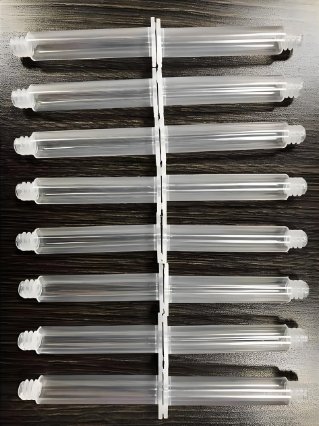
Supply chain risks impact medical injection molding companies worldwide. Delays, quality issues, and compliance failures can disrupt production. Mold makers play a key role in ensuring supply chain stability. Managing risks effectively helps manufacturers avoid costly setbacks and maintain product quality.
1. Understanding Supply Chain Risks in Medical Injection Molding
1.1 What is a Supply Chain Risk?
Supply chain risks include disruptions that affect sourcing, manufacturing, or delivery. These risks impact production, costs, and compliance in medical injection molding.
1.2 Why Risk Management is Critical
- Ensures continuous production.
- Prevents compliance violations.
- Reduces material shortages.
- Minimizes financial losses.
2. Key Risks in Medical Injection Molding Supply Chains
2.1 Material Shortages
- Medical-grade plastics may face supply constraints.
- Raw material price fluctuations increase costs.
- Dependence on a single supplier leads to shortages.
2.2 Quality Control Issues
- Defective materials lead to production delays.
- Poor mold design causes inconsistencies.
- Non-compliance with FDA and ISO standards results in recalls.
2.3 Transportation and Logistics Delays
- Global shipping disruptions cause delays.
- Poor inventory management leads to stock shortages.
- High transportation costs affect profitability.
2.4 Compliance and Regulatory Risks
- Changing regulations increase compliance costs.
- Failure to meet medical industry standards leads to fines.
- Strict documentation requirements slow production.
2.5 Cybersecurity Threats
- Hackers target digital supply chain data.
- Intellectual property theft risks increase.
- Lack of security protocols exposes sensitive information.
2.6 Supplier Reliability Issues
- Inconsistent performance affects production.
- Sudden supplier shutdowns disrupt supply chains.
- Poor communication leads to errors in manufacturing.
3. Best Practices for Risk Management in Medical Injection Molding
3.1 Diversify Material Suppliers
- Use multiple suppliers to reduce reliance on one source.
- Establish backup suppliers for critical materials.
- Source FDA-approved plastics from trusted vendors.
3.2 Strengthen Quality Control Measures
- Implement AI-powered defect detection.
- Use automated inspection systems for accuracy.
- Conduct regular audits of mold makers and suppliers.
3.3 Improve Supply Chain Visibility
- Use real-time tracking to monitor shipments.
- Invest in IoT-enabled inventory management.
- Ensure transparency between suppliers and manufacturers.
3.4 Enhance Regulatory Compliance
- Stay updated on FDA and ISO 13485 standards.
- Maintain clear documentation for audits.
- Train employees on compliance protocols.
3.5 Secure Digital Supply Chain Data
- Use blockchain technology to track transactions.
- Implement strong cybersecurity measures.
- Encrypt sensitive manufacturing and supplier data.
3.6 Develop Contingency Plans
- Create emergency backup production strategies.
- Store extra raw materials for high-demand periods.
- Establish risk management teams for crisis response.
4. The Role of Mold Makers in Supply Chain Risk Management
4.1 Designing Reliable Molds
- High-quality mold makers reduce defect risks.
- Durable molds lower long-term production costs.
4.2 Implementing Predictive Maintenance
- Sensors track mold wear and prevent failures.
- Reduces unexpected downtime in production.
4.3 Collaborating with Suppliers
- Mold makers work closely with material suppliers.
- Ensure that raw materials meet medical-grade standards.
4.4 Supporting Compliance Efforts
- Maintain proper documentation for audits.
- Ensure molds meet FDA and ISO regulations.
5. Technology Solutions for Supply Chain Risk Management
5.1 AI-Powered Forecasting
- Predicts material shortages before they happen.
- Helps manufacturers plan better inventory levels.
5.2 Digital Twin Technology
- Simulates molding processes before production.
- Reduces trial-and-error waste and costs.
5.3 Blockchain for Transparency
- Tracks materials from sourcing to delivery.
- Prevents fraud and ensures quality verification.
5.4 IoT-Enabled Smart Factories
- Connects machines for real-time monitoring.
- Detects and resolves production inefficiencies.
6. Sustainable Supply Chain Practices
6.1 Using Recyclable Medical Plastics
- Reduces reliance on virgin materials.
- Lowers material costs over time.
6.2 Energy-Efficient Manufacturing
- Electric injection molding machines consume less power.
- Smart cooling systems minimize energy waste.
6.3 Green Logistics Strategies
- Optimize transportation routes to cut fuel costs.
- Use eco-friendly packaging for shipments.
7. Future Trends in Risk Management for Medical Injection Molding
7.1 AI-Driven Risk Analytics
- AI will predict supply chain failures before they occur.
- Helps manufacturers make proactive decisions.
7.2 Reshoring and Nearshoring
- More companies will move production closer to reduce risks.
- U.S. and European manufacturers will increase local production.
7.3 Fully Automated Manufacturing
- Smart factories will minimize human error.
- IoT and AI will manage supply chain logistics automatically.
7.4 Advanced Cybersecurity for Digital Supply Chains
- Stronger encryption will protect supply chain data.
- Blockchain will ensure complete traceability.
7.5 Sustainability-Driven Sourcing
- More companies will choose eco-friendly materials.
- Regulations will push manufacturers toward green practices.
Managing risks in medical injection molding supply chains is essential. Mold makers help improve quality, compliance, and production efficiency. Companies must adopt best practices in sourcing, automation, and cybersecurity. With AI, IoT, and sustainable solutions, manufacturers can reduce risks and create a more resilient supply chain.
